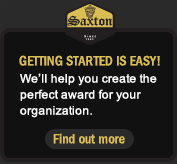Why You Can’t Afford to Ignore Your Existing Donors In Your Fundraising Efforts
This month is all about donors and how as a non-profit you can thank and retain your existing donors to keep them engaged and help you support the causes that are the reason your non-profit exists in the first place.
Our last post was all about donor thank you’s and while it’s true, some people donate anonymously and not for a thank you. Both thanking your donors and keeping your donors engaged so they will donate to your cause, again and again, are crucial.
So yes, people should give purely for the sake of giving, however, your donors are human beings and not saints as well as valuable assets and not just dollar signs. Without donors, your non-profit can’t help the people, the communities or the other causes it supports.
You’re spending too much money chasing after new donors.
According to a non-profit fundraising company, Fundly’s guide to donor retention, most nonprofits are spending between 2 and 3 times more on recruiting new donors than the same donors will donate. What’s more, that donor’s first donation will probably be their only one. But the fact is, new donors cost on average, 5 times more for your nonprofit to acquire than it does to retain an existing donor. I’ll say that last bit again:
You’re spending 5 times more to acquire each new donor than it costs to retain an existing donor!
As you can see, if all you do is spend time & money chasing after new donors, you’re not only missing out on potential revenue for your nonprofit that will help you help more people or fund more services, but you could be spending more money than you ever raise acquiring donors who will never give again because you spend little to no effort or money on retaining them. It’s a bit topsy-turvy, isn’t it?
The importance of donor retention goes beyond cost-effectiveness.
Having an effective donor retention strategy for your organization has so many benefits beyond costing you less money, money that needs to go towards your cause. Those benefits include:
- Increasing opportunities for larger donations: That’s because people don’t tend to give as much the first time they donate to your organization. If you stop at acquiring a donor and don’t make any efforts at retaining them, then your nonprofit is losing out on a crucial fundraising opportunity.
- Build relationships with your donors: Like we already pointed out, your donors are people. They most likely gave money to your organization because they care about the cause your organization supports. Keep them posted on how things are going and involve them in your efforts. They can be volunteers, serve on your board, and they when you engage with them, they’ll probably tell their friends about you and in turn recruit new donors for you to retain.
- Your donors become your ambassadors: When you focus on building relationships with your existing donors, and on getting them involved beyond just convincing them to give you money, they will promote your organization for you. They’ll tell everyone they know both in person and on social media, thus building more awareness around your cause. These new people may, in turn, donate money to your nonprofit or help your cause in other ways.
- Your loyal donors will give you valuable feedback: Because they know and trust your organization, including understanding where their money goes, your regular donors will feel more comfortable giving you feedback on how your organization is doing as far as building relationships with them, contacting them often enough or too much as well as how well you’re doing including them in the organization beyond just asking them for money.
How can you retain your existing donors?
Now that you’re convinced of how important is to make donor retention part of your fundraising efforts, what are some examples of effective programs for keeping your donors once you’ve found them?
- Ongoing donation programs: PBS is one of the original examples of the monthly “subscription” donation program. Many of us probably remember growing up and the quarterly PBS fundraising drives with their thank you gifts depending on the level of donation and the option to give monthly. Over the years, PBS has evolved their ongoing donation program and now it has an online streaming service, PBS passport where for a monthly donation, members gain access to the service.
Your organization doesn’t need to have a television station or stream programs in order to encourage monthly giving from your donors. You just have to switch your focus from one time donations to regular monthly donations. You might be able to get the same person who says they can only afford to give you $10, to instead become a member of your organization for $10 per month. Of course, you can’t just expect that without regular interaction with you that they’ll keep their membership going. So instead of thinking of them as dollars every month. Build relationships with your members by sending them regular updates in the form of newsletters and social media posts, including other ways they can get involved with your organization.
- Thank your donors: In our first post this month we talked about the importance of thanking your donors while stressing not meaning spending lots of money on expensive gifts. Instead, personalized thank you notes, not form letters and combination donor and thank you programs like custom recognition trees or plaques as well as more public and personalized thank you’s on social media and in your organization’s newsletters go much further than a free tote bag.
- Keep them informed: Your donors are just as passionate about your cause as you are. Otherwise, they wouldn’t have donated let alone signed up for a monthly membership. Reward them with regular updates on how their donations are doing by sharing photos and video of the impact of their giving on the people and communities your organization supports. And remember to thank your donors again in your updates.
Founded by actor, Misha Collins, both Random Acts and partner organization
GISHWHES (Greatest International Scavenger Hunt the World Has Ever Seen) are experts in both keeping contributors informed with both photos and videos of how various Random Acts and GISHWHES efforts are going as well as keeping both the updates and giving fun by including personalized content like email updates from Misha, himself and videos posted on social media as well. - Get your donors involved: Again, a running thread that we keep emphasizing here, is not treating your donors like they’re just dollars, but like-minded people who care about the same cause as your organization. That means your donors don’t just want to throw money your way and forget about it. They want to help. Create opportunities for them to get involved in the form of things like volunteer opportunities, events that may or may not involve fundraising, as well as opportunities to have a say in new and ongoing projects.
Again, Random Acts and GISHWHES are organizations that accomplish all of these
effectively. For example, Random Acts gives people the opportunity to submit proposals for “acts of kindness,” as well as training opportunities to become crisis counselors as part of its partnership with IMAlive, To Write Love on Her Arms, and Pop Culture Hero Coalition. GISHWHES holds an annual “scavenger hunt” as well as smaller interactive online events that keep donors and volunteers connected and involved in efforts that go beyond fundraising to connecting people as well as encouraging people to be more involved in helping others and each other.
Retaining your donors doesn’t mean spending lots of money
To bring everything back together, remember, retaining donors costs significantly less than acquiring new donors, 5 times less actually on average. Furthermore, your donors are more than just donors and dollars. Your donors are your volunteers, your ambassadors and sometimes future board members. They’re human beings who are just as invested in the cause your nonprofit organization supports.
Remember to thank them often, keep them informed of the organization’s efforts, give them plenty of opportunities to get involved as well as set up monthly donation programs and not just one-time donation opportunities. For inspiration, look to existing nonprofits and charities who have effective donor retention programs in place, such as PBS, Random Acts, and others. By improving your donor retention rate and getting more people involved, you’ll be amazed at what your organization can accomplish.
Know someone who this post would help?
Share it with your friends and with organizations you support who could use some help.
Categorised in: Uncategorized






